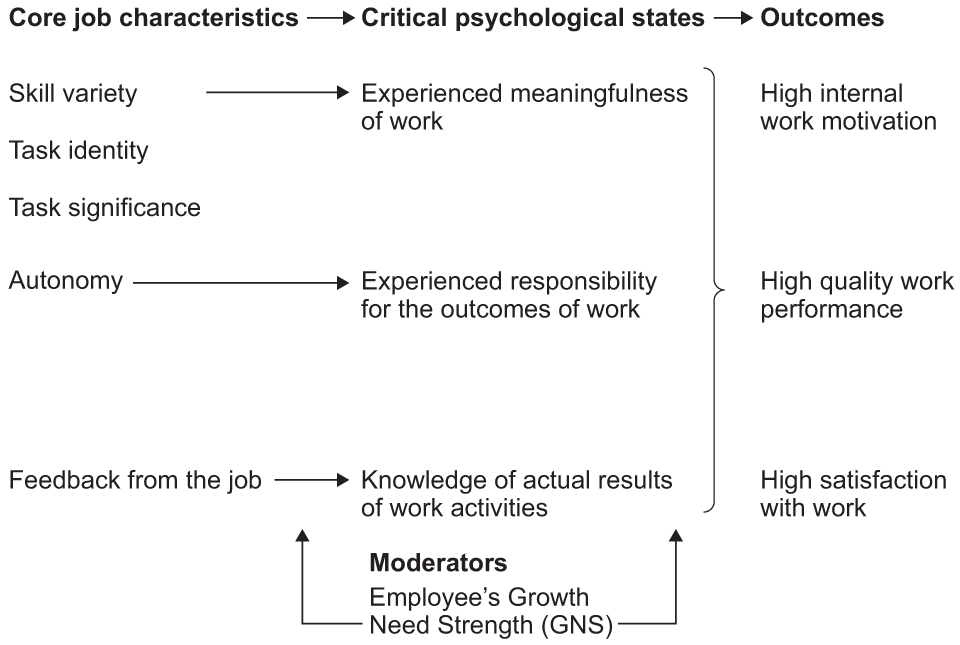Teaching guide: Hackman and Oldham's model of job design (for last exams in 2024)
Identifies factors that influence the motivating potential of a job.
Model/theory

Key points
Highlights five aspects of the design of a job that can influence how motivating it is and highlights the impact of job design on individuals on their performance.
The motivating potential of a job depends on:
Task identity
Does the job holder have a clear task to identify with, eg is there an aspect of what the organisation does that they can say they are responsible for?
Task significance
Does the job holder understand why their job matters?
Task variety
Is there variety in what the job holder does or is it monotonous?
Autonomy
Does the job holder have some ability to act independently?
Feedback
Does the jobholder have feedback from someone (eg the superior, colleagues or customers) to know how they are doing?
The higher a job scores on these elements the more motivating the job is likely to be. If, however, a job scores lowly in one or more of these elements it will reduce its motivating potential.
When you can use this
When discussing job design and the impact of motivation you could consider the different intrinsic aspects of a job and therefore link motivational theorists such as Herzberg.
Where it's been used
-
Q16.1, AS paper 1, 2018
-
Q7, AS paper 1, 2017